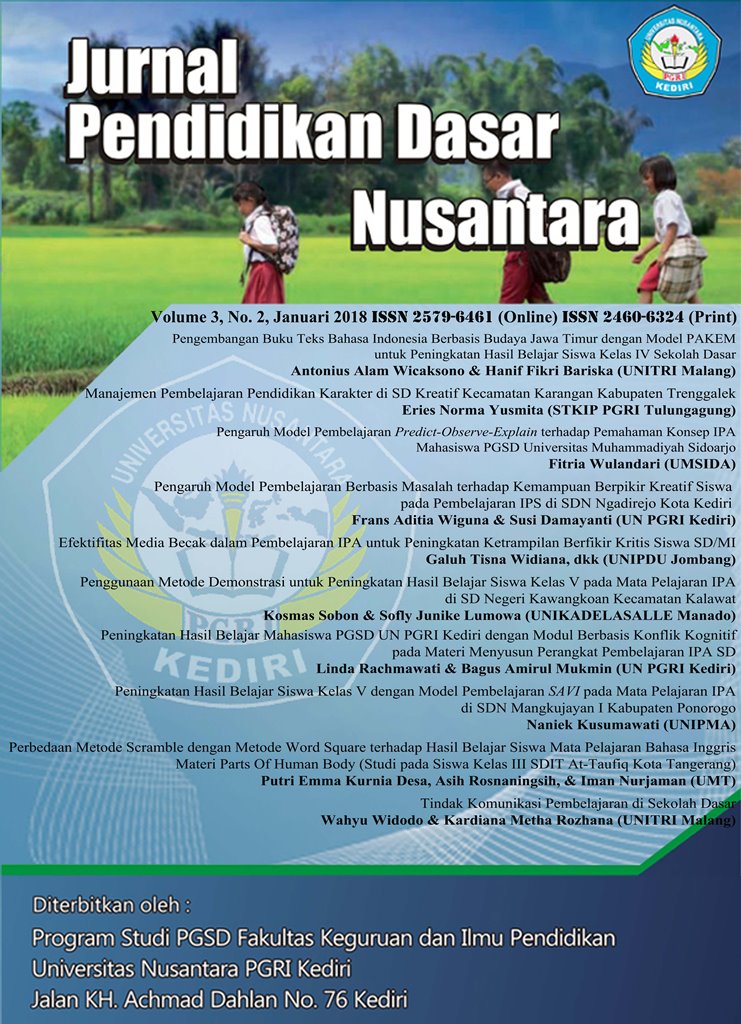EFEKTIFITAS MEDIA BECAK DALAM PEMBELAJARAN IPA UNTUK MENINGKATKAN KETRAMPILAN BERFIKIR KRITIS SISWA SD/MI
DOI:
https://doi.org/10.29407/jpdn.v3i2.11781Keywords:
effectiveness, media, critical.Abstract
“Becak” is one of three dimensional visual media that can be concrete the student’s understanding towards the material of transplantation. Because of becak media, student’s can see participate. Student’s will be easy to understand the material because it’s practical and should be visualized. The aim of this media is student’s can practice “Becak” (Belajar Cangkok) media in the IPA learning. It’s to develop the critical thinking skills of student’s elementary school. This research uses experiental method and research variabel uses pre-test and post-test. By using this method, the researcher will know the understanding from each student. How the apply the media correctly. By the concrete media and the participation of students’s the learning process will be impressive. So that the student’s understanding will grow on their own in the way they participate in the learning process.
Keywords: effectiveness, media, critical.
Downloads
References
Ennis Hugh Robert. 1996. Critical Thinking
Rini, dkk. Meningkatkan Hasil Belajar Siswa Melalui Penggunaan Metode Demonstrasi Pada Mata Pelajaran IPA Di Kelas III SDN Inpres Tunggaling. Jurnal Kreatif Tadulako Online Vol. 2 No. 1
Sudjana, D. 2001. Metode dan Teknik Pembelajaran Partisipatif. Bandung : Falah Production.
Sulistyorini, Sri. 2007. Pendidikan Ilmu Pengetahuan Alam UMS.
Suyitno, Amin. 2006. Pemilihan Model-model Pembelajaran dan di Sekolah. Semarang : Universitas Negeri Semarang.
Downloads
Published
Issue
Section
License
Authors who publish with this journal agree to the following terms:
- Copyright on any article is retained by the author(s).
- The author grants the journal, the right of first publication with the work simultaneously licensed under a Creative Commons Attribution License that allows others to share the work with an acknowledgment of the work’s authorship and initial publication in this journal.
- Authors are able to enter into separate, additional contractual arrangements for the non-exclusive distribution of the journal’s published version of the work (e.g., post it to an institutional repository or publish it in a book), with an acknowledgment of its initial publication in this journal.
- Authors are permitted and encouraged to post their work online (e.g., in institutional repositories or on their website) prior to and during the submission process, as it can lead to productive exchanges, as well as earlier and greater citation of published work.
- The article and any associated published material is distributed under the Creative Commons Attribution-ShareAlike 4.0 International License

































